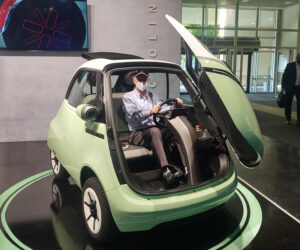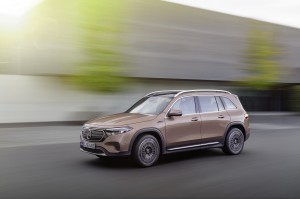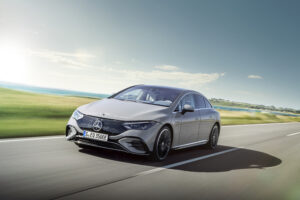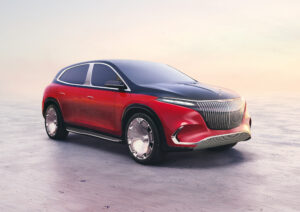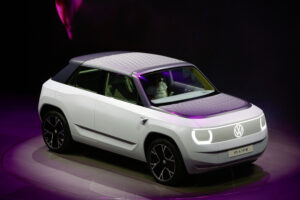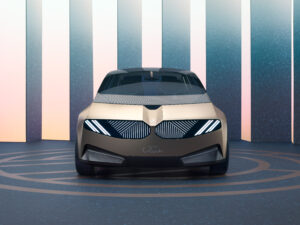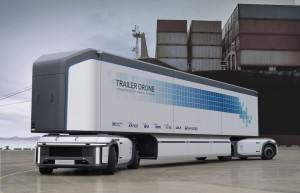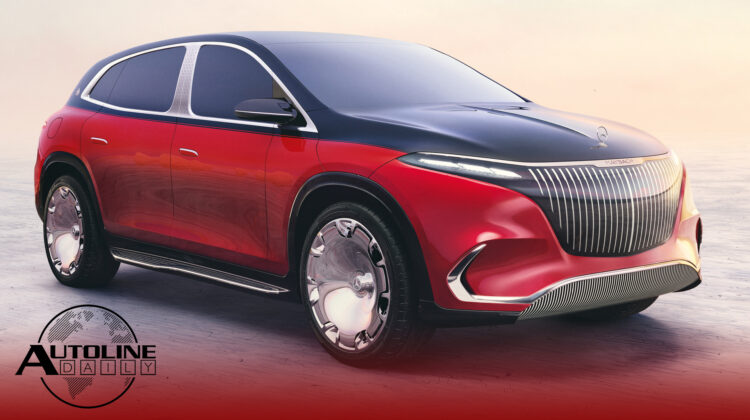
Listen to “AD #3155 – Natural Gas Trucks Worse Than Diesel; Microlino is a Modern Day Isetta; Mercedes Reveals a Slew of EQ Electrics” on Spreaker.
Follow us on social media:
Runtime: 11:08
0:07 Toyota Spending Billions on Batteries
0:39 Natural Gas Trucks Worse Than Diesel
1:31 EPA Reveals Range for Rivian Truck & SUV
3:07 Microlino is a Modern Day Isetta
3:58 Mercedes Ready to Go Electric Off-Roading
4:20 Mercedes EQB is a 7-Seat Electric
4:39 Mercedes EQE Has EQS DNA
5:17 Mercedes-Maybach EQS Crossover
5:49 VW Shows First FWD MEB-Based EV
6:33 BMW Has Its Eye on Sustainability
8:27 Hyundai Reveals Its Hydrogen Vision
9:27 Baojun Unveils KiWi Electric Vehicle
Visit our sponsors to thank them for their support of Autoline Daily: Bridgestone, Intrepid Control Systems, Magna and Schaeffler.
This is Autoline Daily, the show dedicated to enthusiasts of the global automotive industry.
TOYOTA TO SPEND BILLIONS TO PLAY EV CATCH UP
Toyota is behind other automakers when it comes to electric vehicles and in order to catch up to the competition, the company will spend $13.5 billion by 2030 to develop batteries for EVs. It’s aiming to cut battery costs by 30% through the materials it uses and improving the way the cells are structured. Toyota is also developing solid-state batteries and says it’s on target to start manufacturing them in the middle of the decade.
NATURAL GAS TRUCKS WORSE THAN DIESEL
Commercial trucks that run on natural gas are seen as a solution to help improve emissions but not so according to the International Council on Clean Transportation. It just released a study that found that natural gas big trucks are actually worse for the environment than diesel powered trucks. It looked at the entire natural gas supply chain from extraction and pipes, to infrastructure and fueling and says, on average, it’s more harmful than diesels. The study also says ultrafine particulate and ammonia emissions are an issue with natural gas trucks as well. The ICCT says it’s a waste of time and money to build out the infrastructure for gas trucks and that it’s better to just convert the truck fleet to electric.
EPA REVEALS RANGE FOR RIVIAN TRUCK & SUV
Rivian hopes to start deliveries sometime this month and now we have some official range figures from the EPA. The Launch Edition of its R1T pickup with a 135 kWh battery pack and 21-inch wheels can go 314 miles on a single charge, while the R1S SUV with the same setup is rated at 316 miles. Next year Rivian plans to launch additional versions; one with a smaller battery that’s expected to return 230 miles and another version with over 400 miles of range. There will be other wheel sizes available, which will also impact range.
The IAA show in Munich kicked off over the weekend and we’ve got a bunch of unveils to look at.
MICROLINO IS A MODERN DAY ISETTA
And Here’s one of the coolest concepts from the show. It’s called the Microlino–an all-electric, modern day version of the Isetta. And just like the original, the front end opens. Sliding side windows are as simple as they get. And note how the headlamps and rearview mirrors are integrated into one module. It’s from a company called Micro that’s based in Switzerland. The design was done by Icona and the engineering was done by Cecomp. There will be 3 trim lines: Urban, Dolce and Competizione. Target price: €12,500. Micro claims it has 24,000 reservations.
MERCEDES READY TO GO ELECTRIC OFF-ROADING
Mercedes revealed a number of new electric vehicles. First up, is the electric version of the G-Class called the Concept EQG. While this is a concept, the company says it’s a near-production ready version. Mercedes didn’t provide a whole lot of details but says it will be as off-road capable as the non-electric version.
MERCEDES EQB IS A 7-SEATER EV
Next up is the EQB crossover. Its available in both front and all-wheel drive and has the option for five or seven seats. The model will be built in both China and Europe, it launches in both of those markets this year and it arrives in the U.S. in 2022.
MERCEDES EQE HAS EQS DNA
The next electric Mercedes unveiled is the EQE, which shares the same architecture as the EQS sedan. It’s slightly smaller than the EQS and it’s about the same size as the CLS. The battery has 90 kWh of usable energy and it has a range of 660 kilometers or 410 miles based on the WLTP cycle. And it can be upgraded with over-the-air updates. The EQE will be built in Germany for global markets and in China for the Chinese market. It goes on sale in the middle of next year.
MERCEDES-MAYBACH EQS CROSSOVER
And finally, Mercedes-Maybach revealed the EQS crossover. The concept is a preview of the production model. With this being a Maybach, the interior has been designed around chauffeuring riders with plenty of rear seat amenities. The company didn’t reveal when the production version will be available but the non-Maybach version goes into production next year. It will have a range of 600 kilometers or 370 miles based on the WLTP cycle.
VW UNVEILS FIRST FWD MEB-BASED EV
VW unveiled the next model in its ID family of electric vehicles, the ID. LIFE concept. It features a 172-kW electric motor, which accelerates the vehicle from 0 to 100km/h in 6.9 seconds. And it comes with a 57-kWh battery pack that provides 400 kilometers of range or about 250 miles, based on the WLTP cycle. The concept is the first MEB based model that has front wheel drive. And it’s a preview of a production compact crossover it will launch in 2025. VW says that model will cost 20,000 euros.
BMW HAS ITS EYE ON SUSTAINABILITY
BMW is really starting to push its environmental image as a way of separating itself from its competitors; from going electric to using clean energy in manufacturing and sourcing sustainable materials. It says it wants to be the world’s most sustainable manufacturer in the individual premium mobility space. And all aspects of that shine through in its new i Vision Circular concept. It’s a small 4-seater electric that looks ahead to the year 2040. Almost all of the car is made from recycled or recyclable materials, including steel and aluminum. It even says its solid-state battery can be completely recycled. Another way BMW plans to cut down on waste is with 3D printing, where excess material can be put back in the loop. In the i Vision not only is the crystal-like center of the dashboard 3D printed, but so is the outer ring of the steering wheel. And one last interesting note on this concept is that it’s going away from the massive twin-kidney grille, but it’s still a prominent part of the design, extending out and incorporating itself into the headlamp assemblies.
HYUNDAI SHOWS OFF ITS HYDROGEN VISION
Hyundai on the other hand has a much different outlook for the year 2040. That’s when it hopes to popularize hydrogen technologies. It all starts in 2023 with its next-gen fuel cell system that will come in 100 and 200 kW variations, which is equivalent to 134 and 268 horsepower. It says those systems will cut costs by 50% and reduce package volume by 30%. By 2028 Hyundai wants to be the first automaker to apply fuel cells to its entire commercial vehicle lineup. And by 2030 it says the price point of a fuel cell EV will be comparable with a battery electric vehicle. It showed how these systems could be used in autonomous trailers and rescue vehicles and sports cars as well as homes, buildings and powerplants.
BAOJUN REVEALS KIWI ELECTRIC VEHICLE
Chinese automaker Baojun, which falls under the GM-SAIC joint venture umbrella, is launching a new small electric car, called the KiWi. It’s a 4 passenger vehicle with a bit of a funky design and is only slightly larger than the uber popular Hong Guang MINI EV, which is made by Wuling, which is also part of the GM-SAIC JV. Like its sibling, the KiWi is meant to attract young customers, but will likely appeal to a slightly more upscale buyer. With a 40 kW electric motor and 150 Nm of torque it has nearly twice the power of the MINI EV. It also has about twice the range; 305 kilometers or about 190 miles. Top speed of 100 km/h or about 62 MPH is the same, but the KiWi comes with Baojun’s latest infotainment system that includes navigation. So, as you would expect the KiWi carries a higher price tag. It ranges between roughly $10,800 and $12,200.
But that’s all for today’s show, thanks for watching.
Thanks to our partner for embedding Autoline Daily on its website: WardsAuto.com
Seamus and Sean McElroy cover the latest news in the automotive industry for Autoline Daily.






